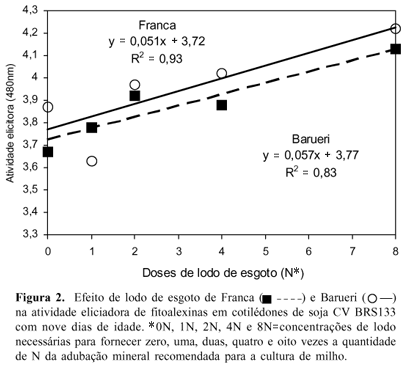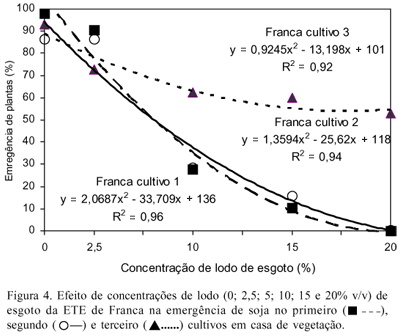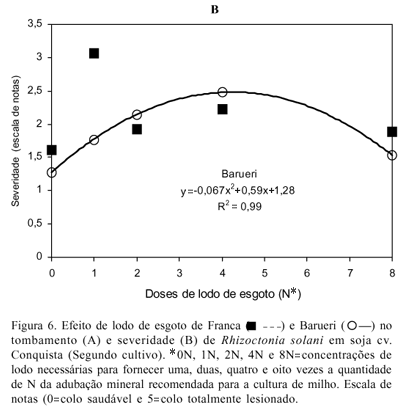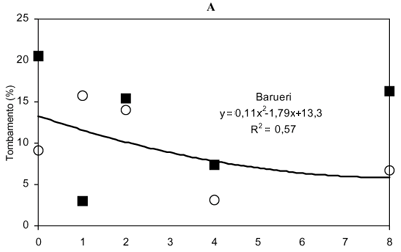Sewage sludge, complying with environmental demands, has potential for use in agriculture. The incorporation of sewage sludge may changes the chemical, physical and biological soil properties, for being rich in macro and micronutrients and organic matter. These changes can provide benefits such as the increase in the availability of nutrients for plants, and the induction of suppressiveness to soilborne plant pathogens and resistance to foliar diseases. However, it may influence negatively the biological and chemical balance of the soil, due to the presence of contaminants. The objective of this work was to evaluate the effect of sewage sludge on the severity soybean (Glycine max) powdery mildew (Erysiphe diffusa) and on suppressiveness to Rhizoctonia solani and Macrophomina phaseolina The experiments used soil which received four successive applications of sewage sludge (from 1999 to 2001), originally from the wastewater treatment station of Barueri and Franca counties, São Paulo State, Brazil, in concentrations of 0, 1, 2, 4 and 8 times (0N to 8N) the dose of N recommended for corn. Two experiments were conducted to investigate the effects of sewage sludge on soybean powdery mildew (E. diffusa) in a naturally infested greenhouse. In another experiments, the soybean emergency and powdery mildew severity were evaluated in plants growing in container media mixed with 0; 2.5; 5; 10; 15 and 20% of sewage sludge from Franca Sewage Treatment Station. A similar experiment was conducted twice to evaluate the effects of sewage sludge on seedling emergence, damping-off incidence, and severity of R. solani and M. phaseolina. In this case, the soil was artificially infested with the pathogens. Sewage sludge incremented elicitation of phytoalexins in soybean and the severity of powdery mildew was reduced with an increase in the concentration of sludge in the soil and substrate. Seedling emergence, in the three cropping periods, was inversely proportional to the Franca sewage sludge concentrations, at 20% totally inhibited the soybean seedling emergence. Franca sewage sludge not affects damping-off and severity caused by R. solani. For Barueri sludge, in the first cropping, there was a quadratic response for damping-off, with increased of 1N and 2N, and reduction at 4N. In the second cropping, increased damping-off, but a quadratic response with an inflection point at 1N. On the other land, the damping-off was the same for control and 8N. For severity, in two soybean cropping, Barueri sludge presents a quadratic response with an inflection point at 4N. The incidence of M. phaseolina was inversely proportional to Franca sewage sludge concentration. In the present study, there were no treatment affects the suppressiveness of R. solani and M. phaseolina.
Organic residues; soybean diseases; suppressiveness; microbial activity; Rhizoctonia solani; Macrophomina phaseolina










